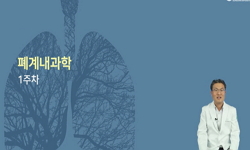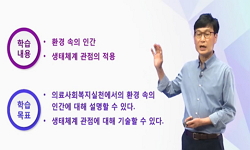최근 내시경은 기술적인 발전으로 다양한 치료와 수술분야에서 이용되고 있으며 특히 코안과 코곁굴 질환에 내시경을 이용할 때 코안의 구조물을 쉽게 볼 수 있어 수술 시간이 감소되고 팩...
http://chineseinput.net/에서 pinyin(병음)방식으로 중국어를 변환할 수 있습니다.
변환된 중국어를 복사하여 사용하시면 됩니다.
- 中文 을 입력하시려면 zhongwen을 입력하시고 space를누르시면됩니다.
- 北京 을 입력하시려면 beijing을 입력하시고 space를 누르시면 됩니다.
내시경수술을 위한 코안구조물의 형태계측적 연구 = Morphometric Analysis of Anatomical Structures in the Nasal Cavity for Endoscopic Surgery
한글로보기https://www.riss.kr/link?id=T10931525
- 저자
-
발행사항
서울 : 한양대학교 대학원, 2007
- 학위논문사항
-
발행연도
2007
-
작성언어
한국어
- 주제어
-
발행국(도시)
서울
-
형태사항
ii, 95 p. : 삽도 ; 26cm.
-
일반주기명
국문요약 : p. i-ii
Abstract : p. 93-95
참고문헌 : p. 65-69 - 소장기관
-
0
상세조회 -
0
다운로드
부가정보
국문 초록 (Abstract)
최근 내시경은 기술적인 발전으로 다양한 치료와 수술분야에서 이용되고 있으며 특히 코안과 코곁굴 질환에 내시경을 이용할 때 코안의 구조물을 쉽게 볼 수 있어 수술 시간이 감소되고 팩킹이 필요 없어 환자의 불편함이 최소화되었다. 그러나 코곁굴 내시경수술 시 광범위한 병증을 가졌거나 심한 출혈이 있는 환자가 전신마취를 할 경우 합병증이 초래되고, 내시경수술 시 좁은 공간에서 출혈이 생기면 시야 확보가 어려운 문제점이 있어 코곁굴에 대한 해부학적 구조의 정확한 숙지는 필수적이다.
본 연구에서는 고정된 한국 성인 시신 21구(남자 12구, 여자 9구, 평균 나이 62.9세)의 머리뼈 42쪽을 대상으로 코 지표에 따른 분류, 코선반과 코중격, 나비입천장구멍, 나비뼈동굴의 형태와 위치를 계측하였고 코곁굴 자연개구부인 나비동굴구멍, 이마코관 깔때기쪽 구멍, 위턱동굴구멍, 코눈물관구멍의 위치관계를 계측하여 다음과 같은 결과를 얻었다.
1. 코 지표에 따른 7가지 분류 중 mesorhine형이 가장 많이 나타났다.
2. 맨위코선반은 66.7%에서 관찰되었고, 코점막 박리 후 위코선반 길이는 21.8 ± 3.7 mm, 중간코선반 길이는 38.9 ± 3.9 mm, 아래코선반 길이는 40.6 ± 4.3 mm이었다.
3.나비입천장구멍은 난원형이 가장 많았으며 앞코가시점에서 54.4 ± 3.9 mm, 중간코선반 뒤끝점에서 가장 가까운 지점인 나비입천장구멍 가장 아래지점까지의 거리는 5.6 ± 5.5 mm, 수평면과의 각도는 15.9 ± 5.9 도와 22.1 ± 6.8 도 사이에 위치한다.
4. 나비뼈동굴의 앞벽은 두께가 1.2 ± 0.7 mm, 앞코가시점에서의 거리가 1.9 ± 0.9 mm, 안장바닥은 두께가 0.7 ± 0.8 mm, 앞코가시점에서의 거리는 76. 2± 4.6 mm이었다.
5. 앞코가시점에서 나비동굴구멍까지의 거리는 58.5 ± 4.5 mm, 이마코관 깔때기쪽 구멍까지는 43.4 ± 4.8 mm, 위턱동굴구멍까지는 41.3 ± 4.3 mm, 코눈물관구멍까지는 29.6±5.0 mm이었다.
6. 각 계측 값은 성별에 따른 통계적 유의성이 없었다.
이 결과들은 코곁굴 내시경수술 시 해부학적 지표로써 유용한 자료가 될 것이다.
다국어 초록 (Multilingual Abstract)
Recently, with the increasing interests in the endonasal diseases, less invasive endonasal endoscopic surgery has brought a number of changes in surgery on the nasal cavity and paranasal sinuses. The use of the endoscope has simplified the viewing of ...
Recently, with the increasing interests in the endonasal diseases, less invasive endonasal endoscopic surgery has brought a number of changes in surgery on the nasal cavity and paranasal sinuses. The use of the endoscope has simplified the viewing of the endonasal structures and reduced the need of packing and post-operative discomport. Particularly, this technique is optimal for various inflammatory lesions like chronic rhinosinusitis, as well as for the removal of the tumor within the sphenoidal sinus or pituitary gland. However, surgery using the endonasal endoscopy can be complicated when the patients have excessive bleeding or when the range of view is narrow due to bleeding. It is essential for operators to have detailed knowledges of the anatomy for the successful surgery. This study aimed to provide detailed anatomical structures of the nasal cavity and the endonasal sinus.
Forty two sagittally-divided adult cadaveric heads (male; 12, female; 9, mean age; 62.9 years) were used. We investigated the classifications for the shapes of the nose, measurements of nasal conchae and nasal septum, observations for sphenopalatine foramen, sphenoidal sinus, opening of sphenoidal sinus, infundibular opening of frontonasal duct, opening of maxillary sinus, opening of? nasolacrimal duct.
1. The most frequent class of the nasal indexes was mesorhine.
2. The highest nasal conchae were observed in 66.7% of the case. After removal of the mucosa, the lengths of the superior nasal concha, middle nasal concha, inferior nasal concha were 21.8 ± 3.7 mm, 38.9 ± 3.9 mm, 40.6 ± 4.3 mm, respectively.
3.The most frequent shape of the sphenpalatine foramen was oval type. The distances from the akanthion to the sphenpalatine foramen, from the posterior end of the middle nasal concha to the lowermost end of the sphenpalatine foramen were 54.4 ± 3.9 mm and 5.6 ± 5.5 mm, respectively. The angle between horizontal line and the connecting line between akanthion and the uppermost end of the sphenpalatine foramen was 22.1 ± 6.8 degrees, the angle between horizontal line and the connecting line between akanthion and the lowermost end of the sphenpalatine foramen was 15.9 ± 5.9 degrees.
4. The thickness of the anterior wall of the sphenoidal sinus was 1.2 ± 0.7 mm, the distance from the akanthion to the anterior wall of the sphenoidal sinus was 1.9 ± 0.9 mm. The thickness of sella turcica was 0.8 ± 0.8 mm, the distance from the akanthion to the sella turcica was 76.2 ± 4.6 mm.
5. On the average, the distance from the akanthion to the opening of sphenoidal sinus, to the infundibular opening of frontonasal duct, to the opening of maxillary sinus, to the opening of nasolacrimal duct was 58.5 ± 4.5 mm, 43.4 ± 4.8 mm, 41.3 ± 4.3 mm and 29.6 ± 5.0 mm, respectively.
6.The measurements had no significant differences between male and female statistically.
The detailed measurements of the nasal cavity and the paranasal sinuses performed in this study may provide useful anatomical landmarks for the endonasal endoscopic surgery.
목차 (Table of Contents)
- Ⅰ. 서론 = 1
- Ⅱ. 대상 및 방법 = 4
- Ⅲ. 실험결과 = 12
- Ⅳ. 고찰 = 57
- Ⅴ. 결론 = 63
- Ⅰ. 서론 = 1
- Ⅱ. 대상 및 방법 = 4
- Ⅲ. 실험결과 = 12
- Ⅳ. 고찰 = 57
- Ⅴ. 결론 = 63
- 참고문헌 = 65
- 사진부도 및 설명 = 70
- 영문초록 = 93











